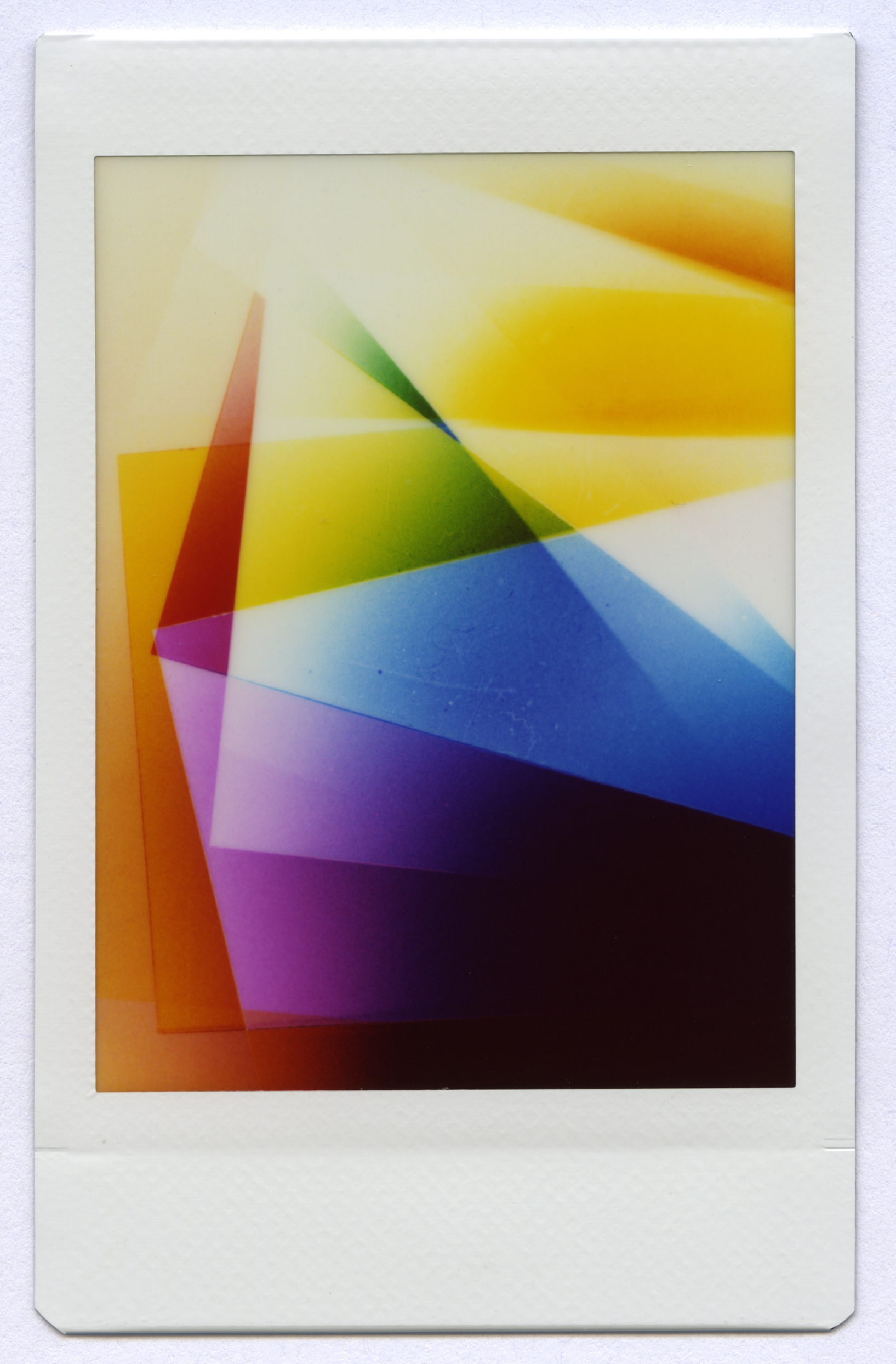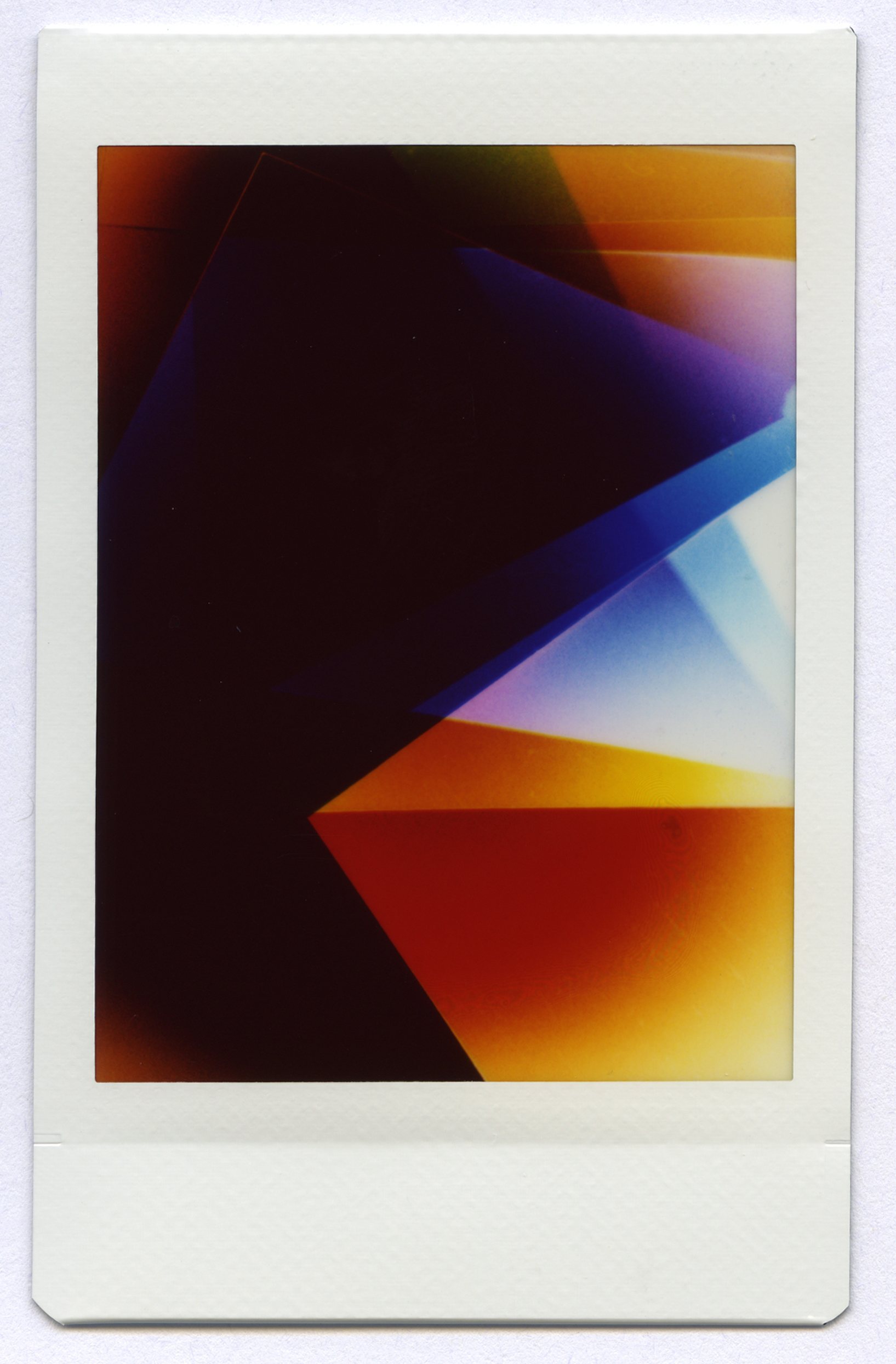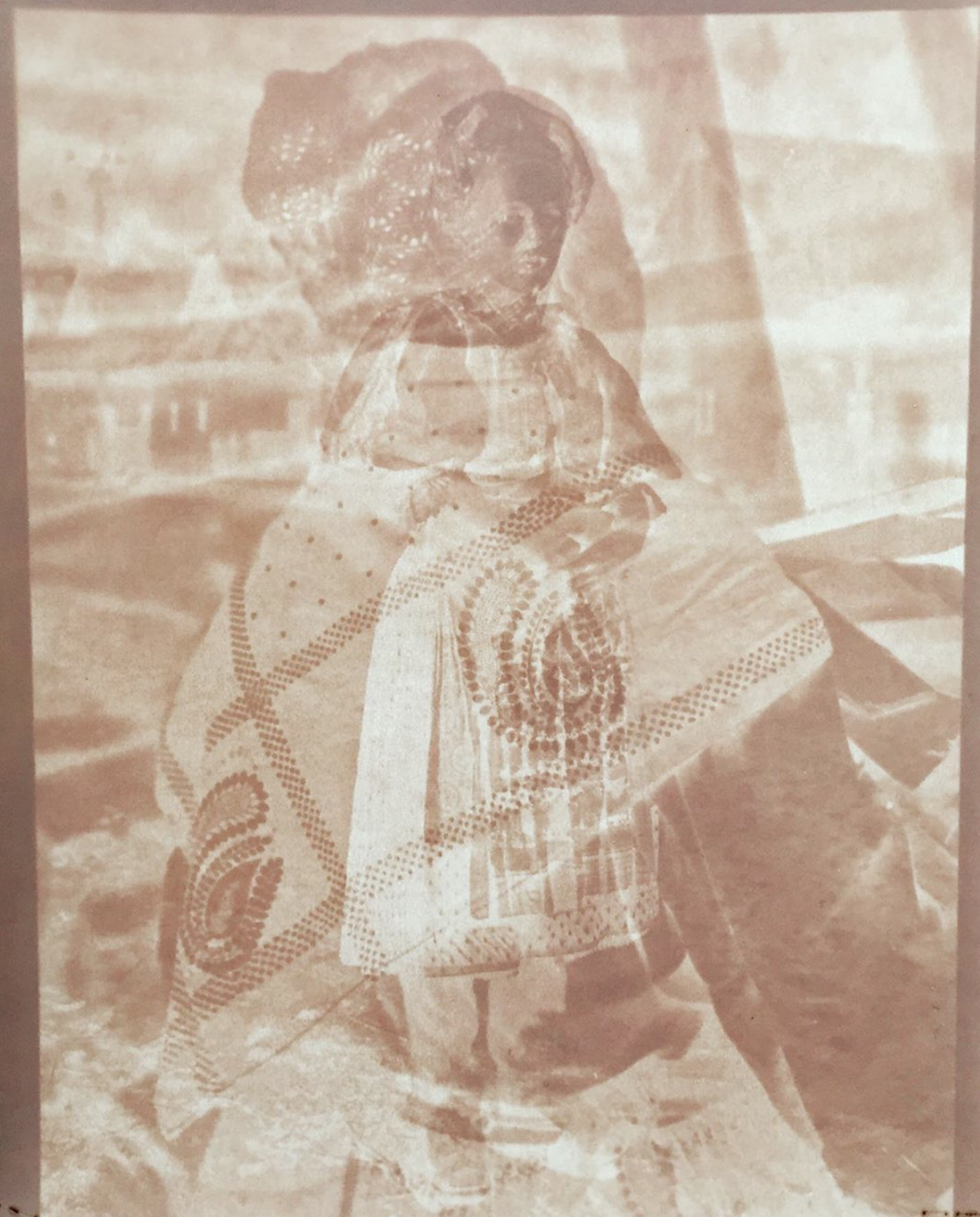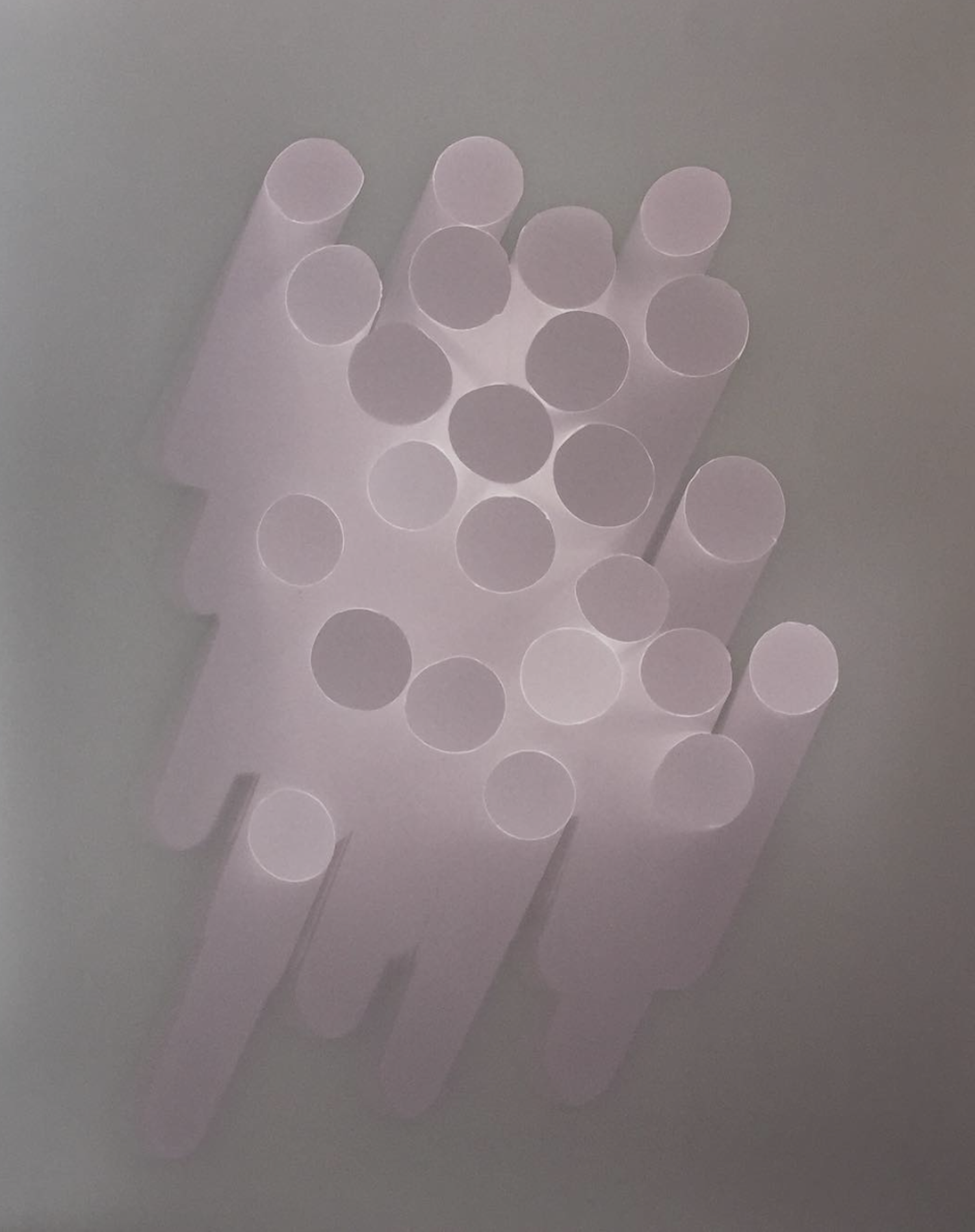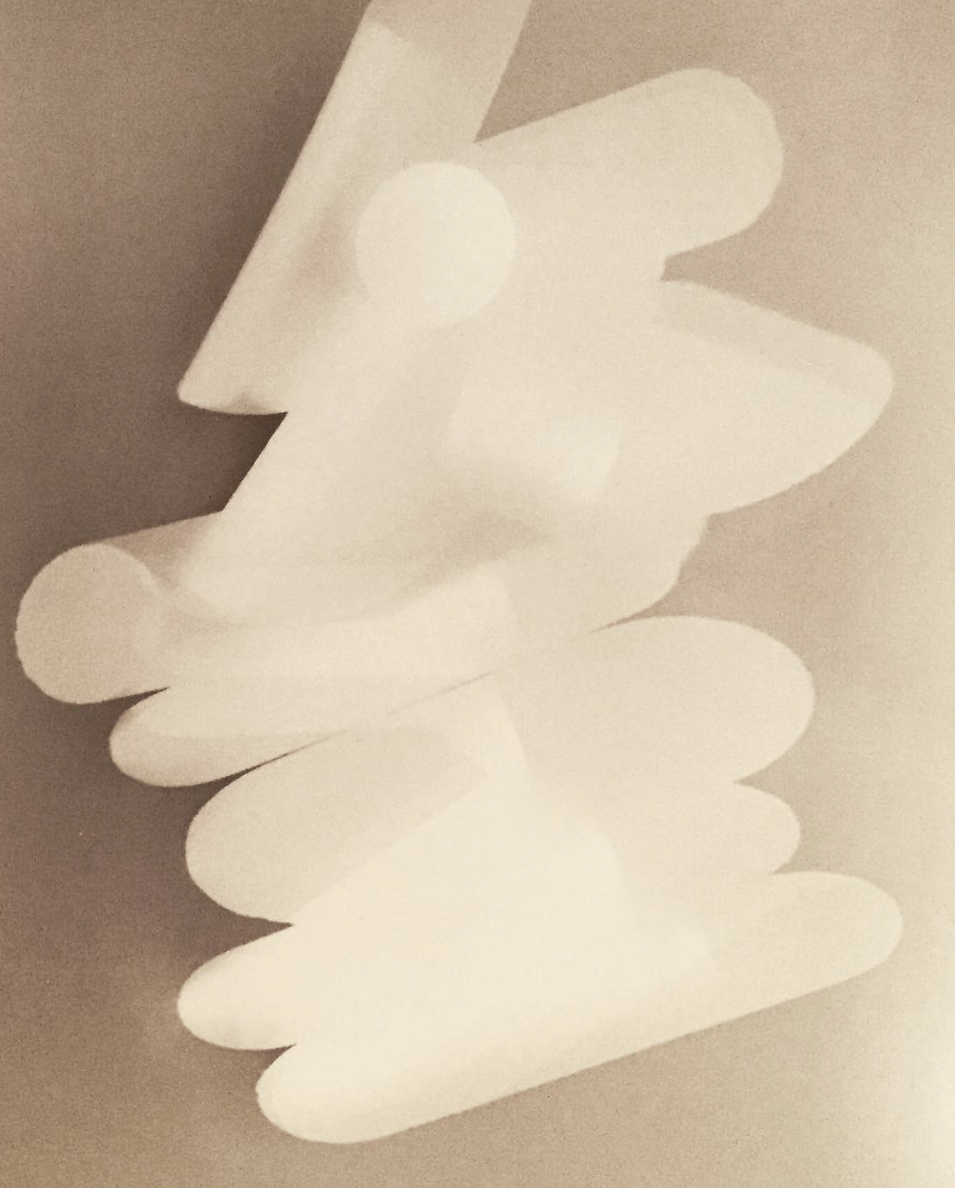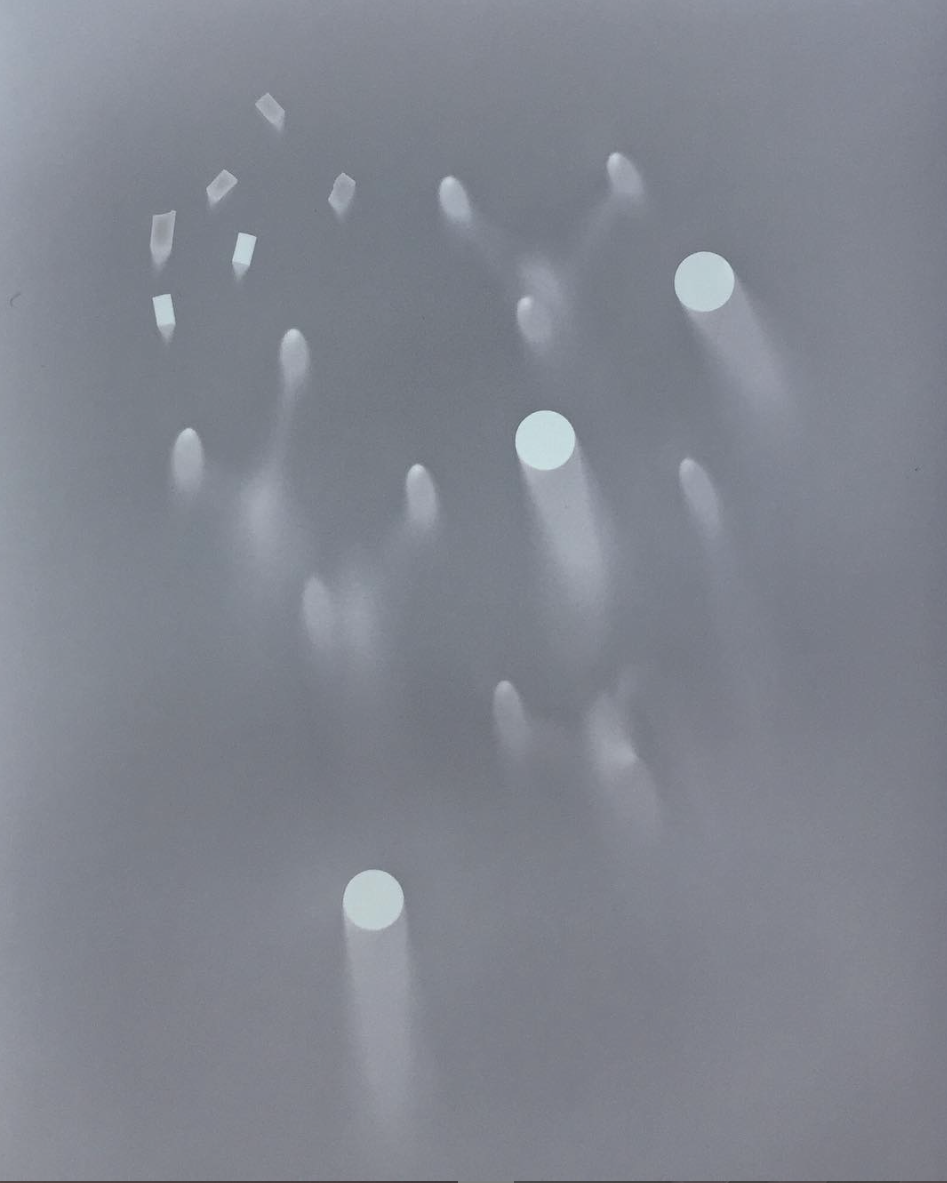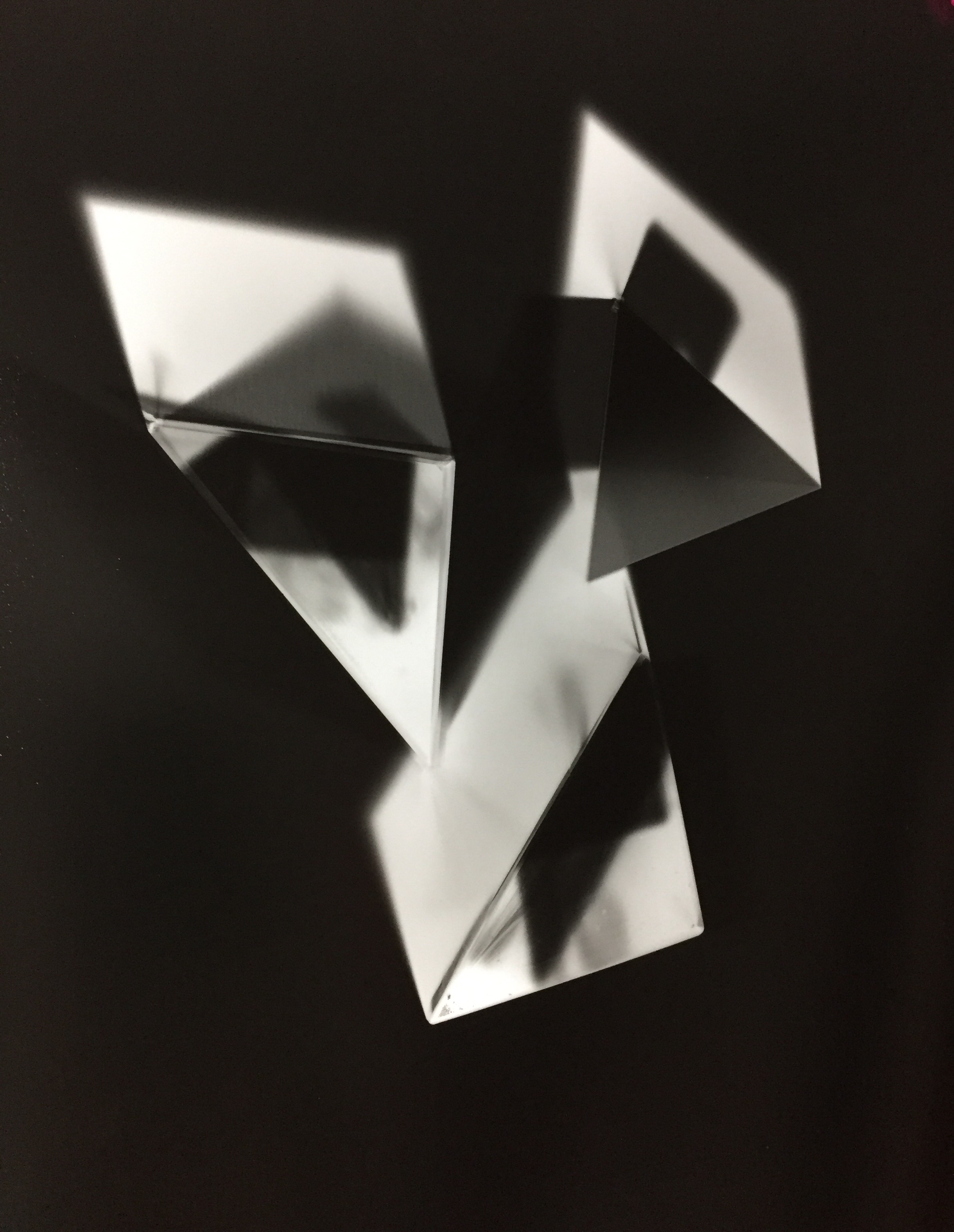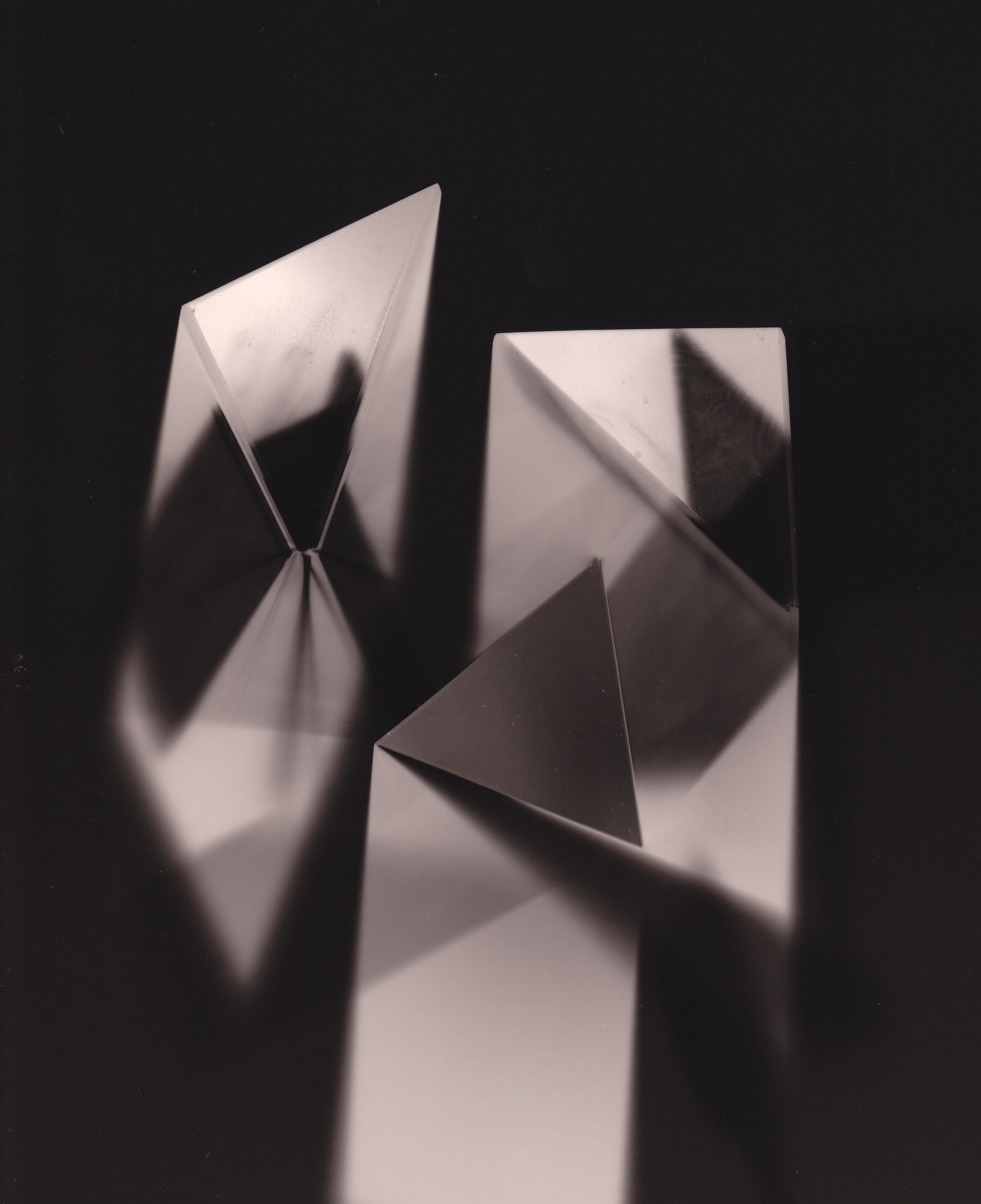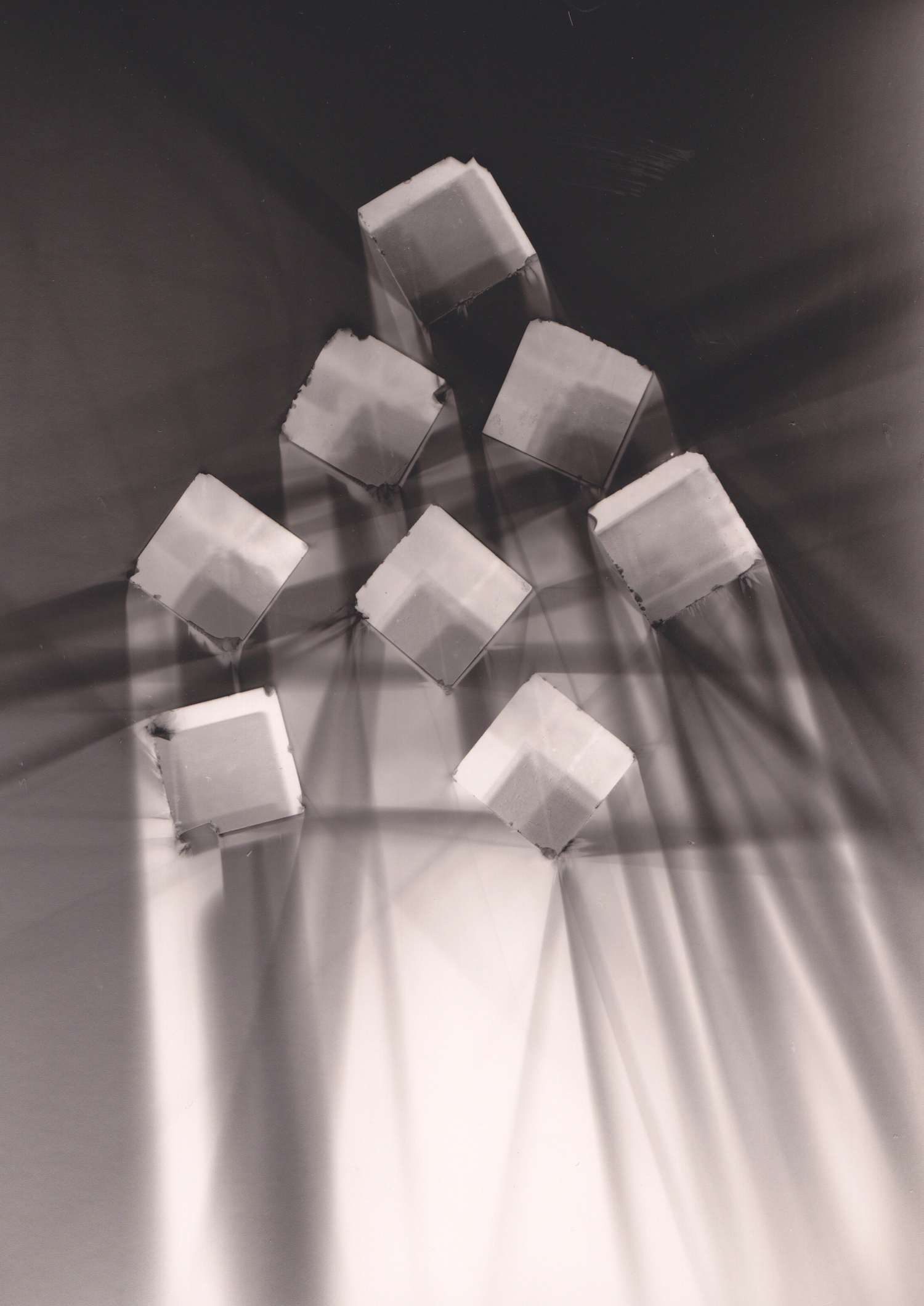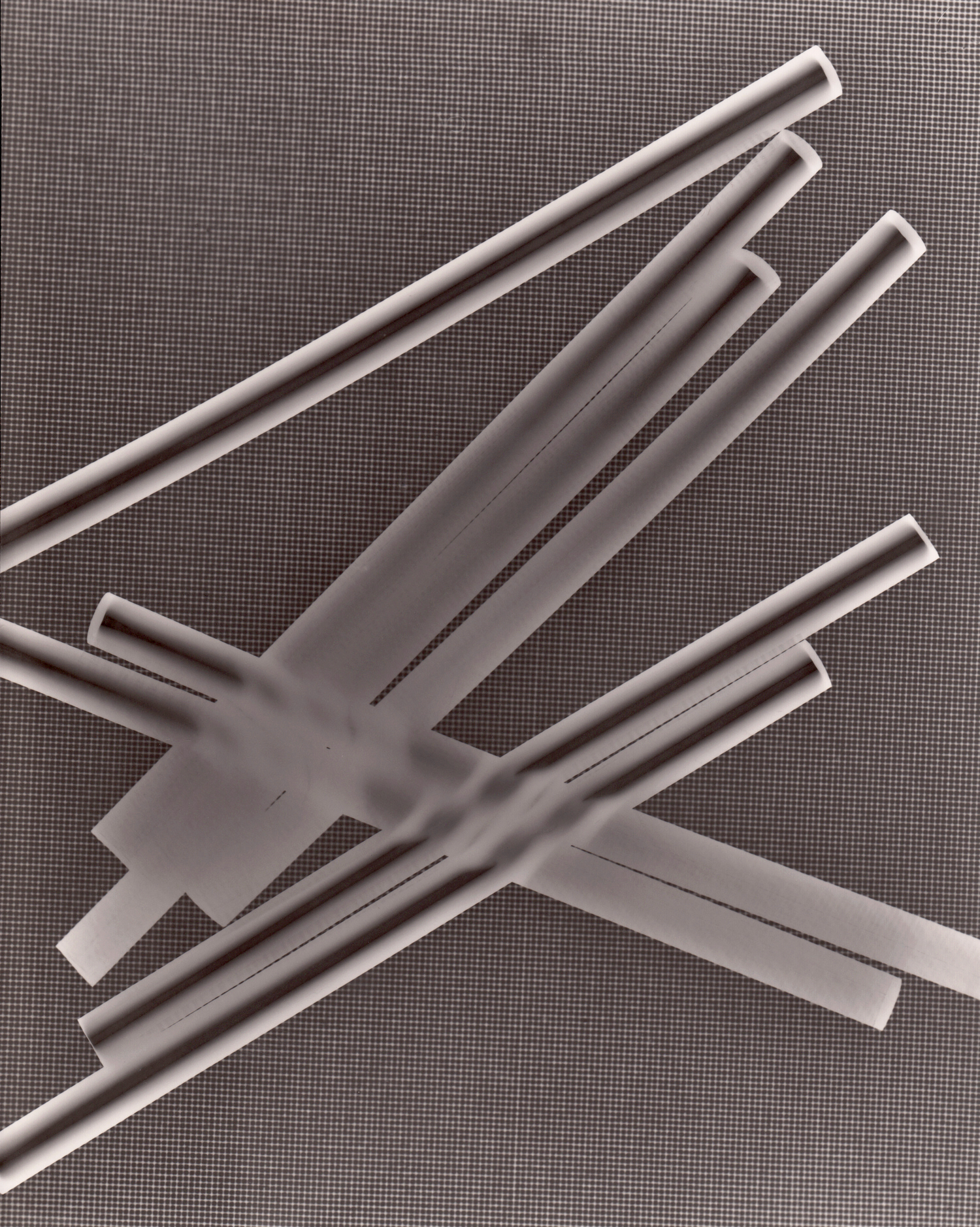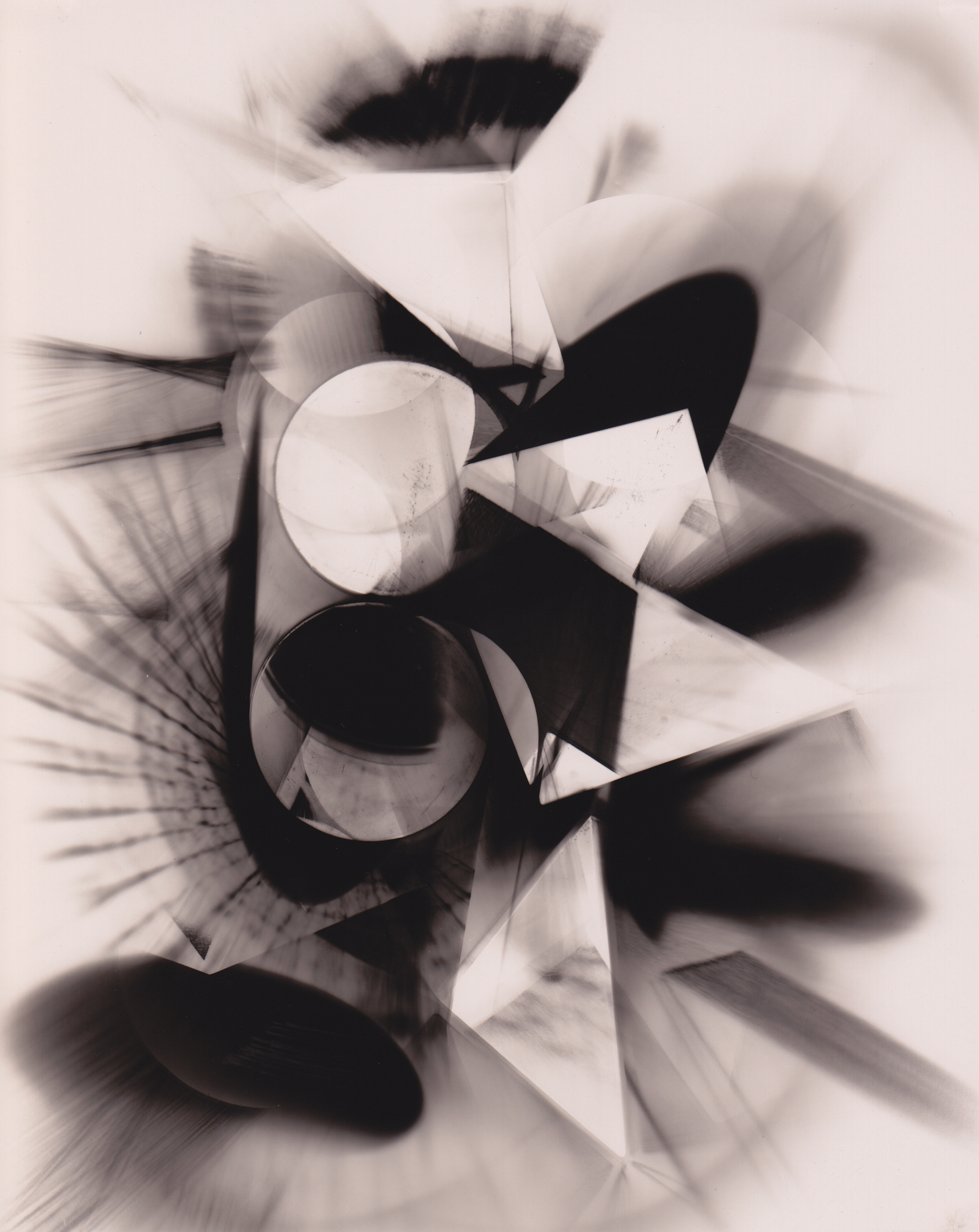Poppy Lekner - featured portfolio
Poppy Lekner
Selected Works
Featured Portfolio
Poppy Lekner, Huygen’s Cluster, 2018
Essay by Deidra Sullivan for PhotoForum, May 2019
Follow Poppy on Instagram @poppylekner
Poppy Lekner (46) is a Wellington based photomedia artist. Graduating from Massey University with a Bachelor of Fine Arts in 2008, she was Head of Photography at Wellington High School and now teaches at Inverlochy Art School. Recent exhibitions have included ‘Horizons: Meta Scientific explorations with Cameraless Photography’ at Toi Poneke, Wellington, 2017, and ‘Defrag Phase Shift’ at play_station, Wellington, 2018.
Poppy Lekner’s cameraless photographs arrive packaged in a box for viewing. Inside are many smaller boxes (Kodak Velox, Fujifilm Instax mini) full of prints, as well as books (a dictionary of biology, a biography of Renoir) with photographs slipped between the pages. Unpacking the work is reminiscent of looking through a previously undiscovered collection of family photographs, wondering what might be found or which mysteries solved. What emerges is a sustained body of work incorporating photograms, sungrams (also called lumen prints), and polaroids – Lekner’s ongoing investigation into the relationships between light, time, photographic surface and object. I find myself laying out the prints, arranging and rearranging their order, checking the backs for inscriptions and paper stock details, enjoying the different weights and sizes of paper, the combination of colour and monochrome. The physicality of these photographs is nothing less than joyful.
Polaroids

Since the late 1990s, there’s been what might be described as a ‘material turn’ in photographic practice, with many photomedia artists exploring historic photographic processes and objects. As Photo Historian Elizabeth Edwards suggests, a photograph is an amalgamation of “image and object brought into a single coherent form.”[1] Yet photographs are usually treated as pure content – about what’s depicted – and their materiality merely a neutral support for the image. Within contemporary digital culture this is exacerbated further. Photographs, viewed upon a screen, any screen, belong to no particular place and have no specific physical presence. But in spite of our dominant digital culture, or most likely because of it, many contemporary photomedia artists are making a shift back to analogue and cameraless processes to explore the fundamentals of photography.
Sungrams
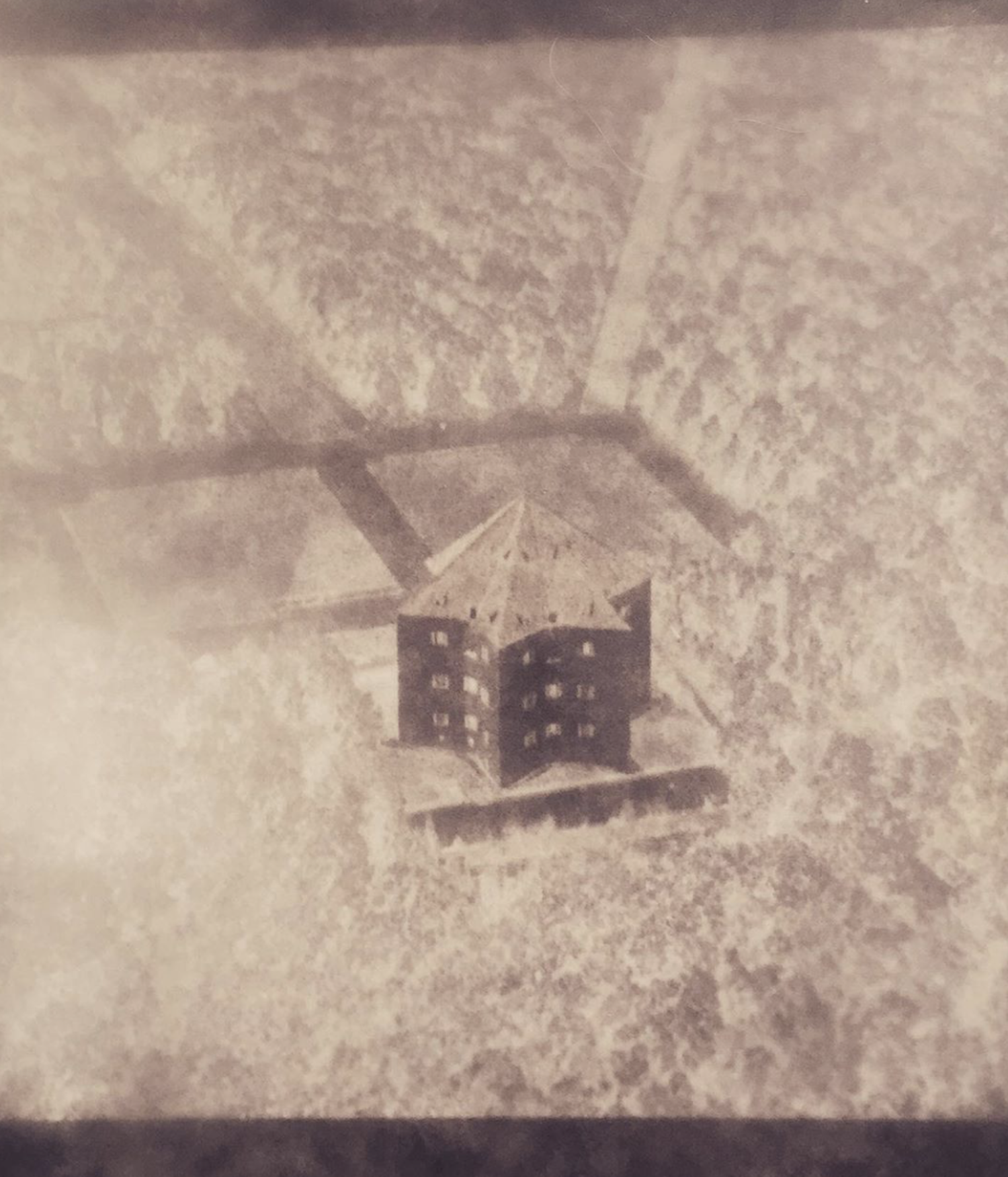

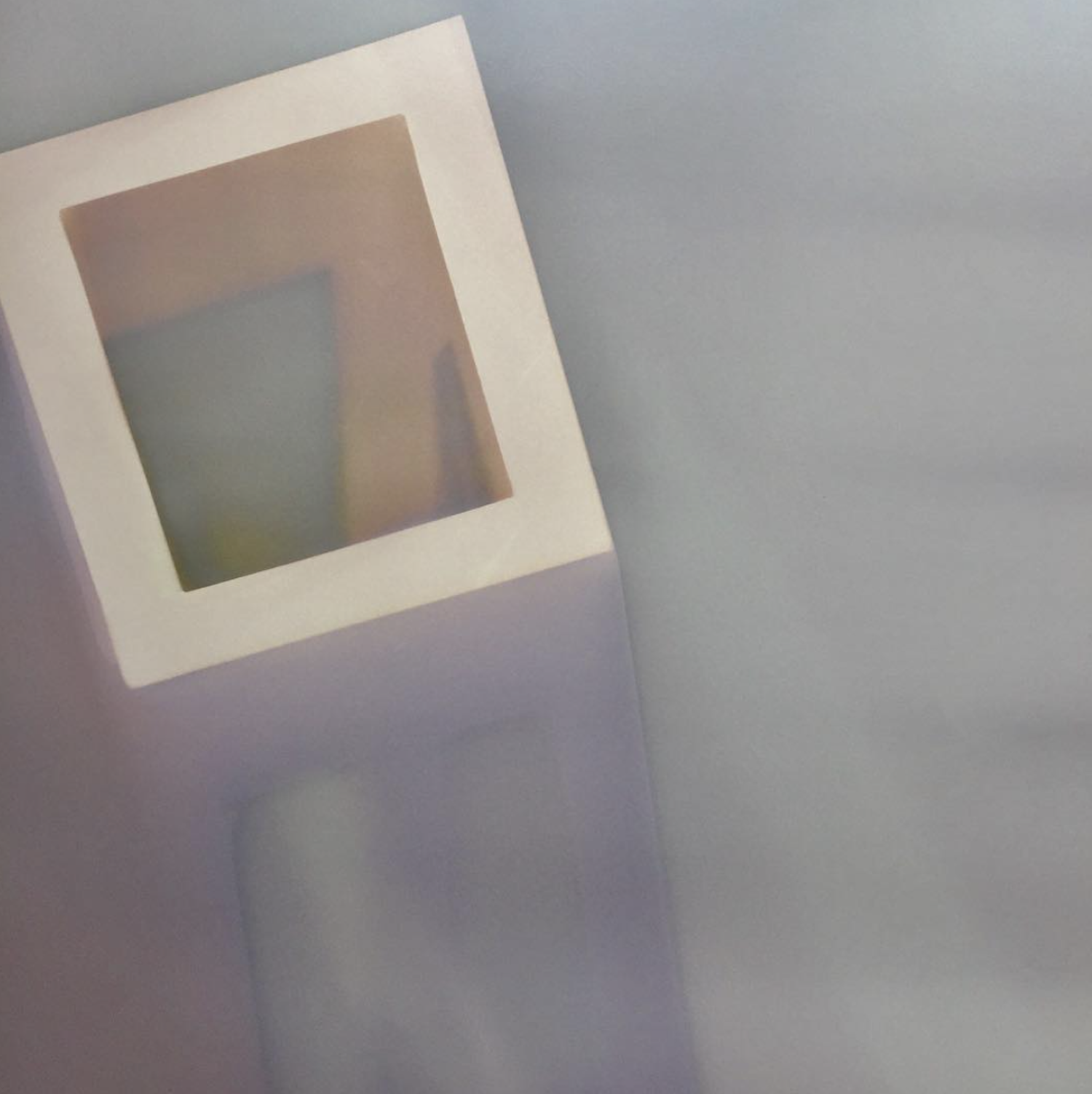

Lekner is one of these artists. She began making cameraless photography about ten years ago, when she was given a collection of her late grandmother’s illustrated books of art and architecture. From these, she created sungrams, using the illustrations as ‘negatives’ and contact printing them onto photographic paper in direct sunlight. The results are gentle traces of the original pages rendered in shades of pink, orange and brown. Lekner describes this work as a way of reconnecting with her family history, a process of creating a history of her grandmother through the books that she owned. As such, the physical contact between book and print was important, providing a sense of immediacy and connection. In some of these sungrams, multiple images are present, suggesting what Lekner refers to as “a form of cumulative history.”
These initial sungrams evolved into a sustained testing that resulted in Horizons: Meta Scientific explorations with Cameraless Photography, at Toi Poneke gallery in 2017. Here, Lekner used a variety of scientific equipment including glass dishes, test tubes, and diffraction sheets to create work that explores the interplay of light and object. While aesthetically quite distinct to the pieces produced using her grandmother’s books, it’s interesting to note many of the objects used were pieces of equipment discarded from her father’s physics lab – suggesting another variation of Lekner’s interest in telling a personal history through objects.
Some of the Horizons sungrams suggest distinct or coherent objects, while others are a complex layering of light and dark that invite the viewer to consider the possibilities of the original structure. Part of the appeal of the sungram for Lekner is the directness of the trace left on the photographic paper from light passing through the objects she uses: “I like the truthfulness and the directness of the sungram and the photogram. Even though it is an altered version of reality, the print is made through physical contact, through time and space, with that object...”.[2]
Lekner’s body of work is a sustained process of questioning, a drive to discover what results when particular objects, light sources and papers are combined. It’s an approach that mixes systematic methodology with a sense of play. Lekner suggests her combination of choices has to be “something that holds a possibility. Possibility and desire. If I’m too familiar with an object I lose the desire to work with it. There’s a point at which the questions are answered.”[3]
Photograms
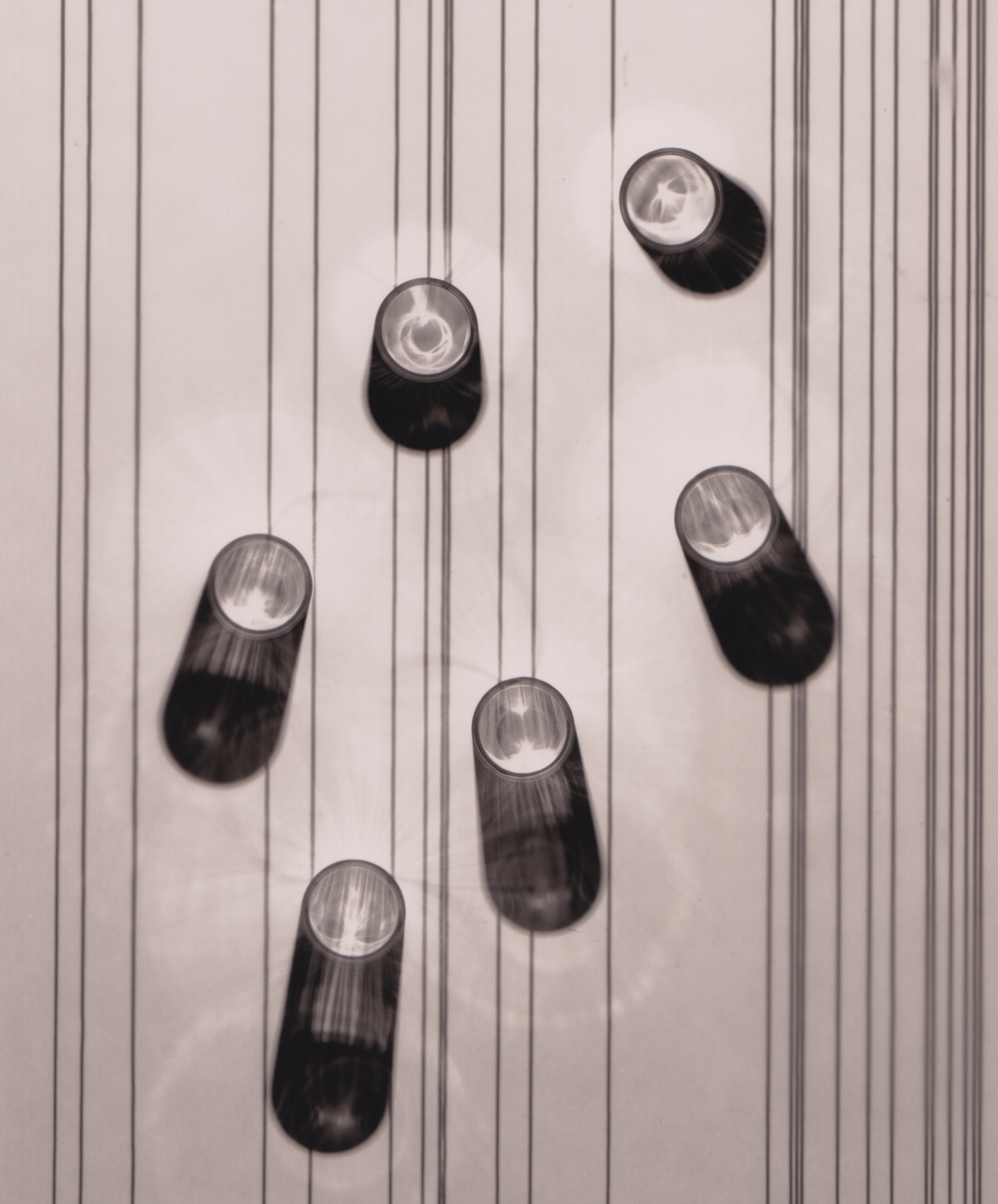
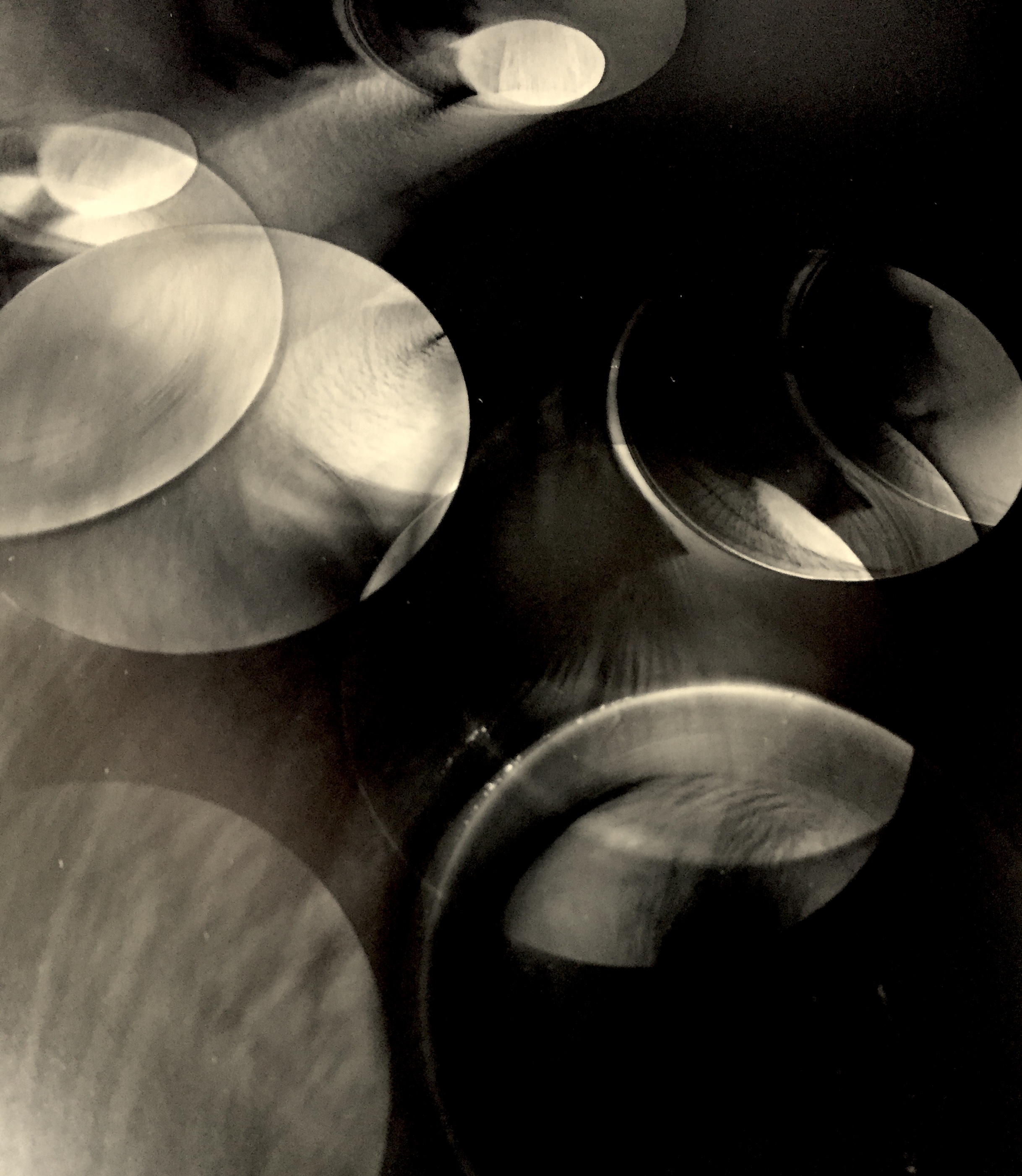
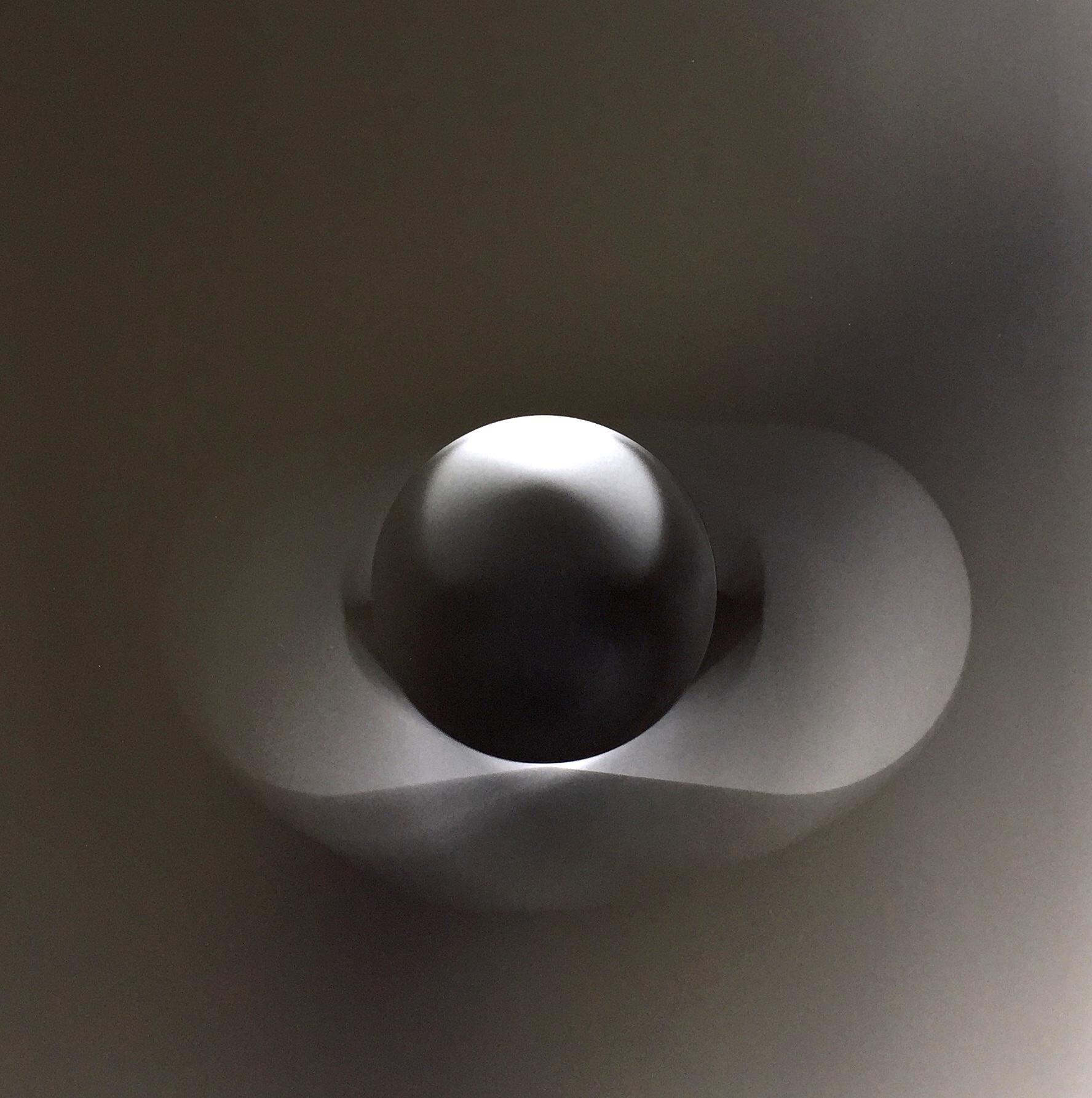

Recent work has seen Lekner move back into the darkroom, producing a large range of photograms on expired Kodak Velox, among other papers. Many of these works were made either with found objects, or objects directly from her home environment (springs, sticks of glue for a glue gun, broken safety glass, perspex rods, cardboard storage boxes). A range of light sources are used including lasers, infrared lights and tungsten lamps, and they’re variously suspended, positioned at angles, or set in motion to render a result. In some of these photograms, multiple light sources appear to fragment the original object; in others, light passing through the objects reveals an otherwise hidden internal structure, or produces such a sense of 3D form the object seems to rise off the paper. Lekner also tested these strategies with polaroid instant film, finding the light source and intensity impacted significantly on the resulting colour.
Cameraless photographs have an understated presence within the history of photography, despite being the oldest form of photographic image making. Thomas Wedgwood, working in the late 18th century, was able to produce, but not fix, direct contact images; William Henry Fox Talbot successfully produced ‘photogenic drawings’ during the 1830s, and Anna Atkins used the cyanotype process to contact print specimens of algae and ferns two decades later. The cameraless photograph held renewed interest for the avant-garde in the early 20th century. Laszlo Moholy-Nagy described photograms as “direct light diagrams recording the actions of light over a period of time, that is, the motion of light in space... [they] bring a completely new form of space articulation.”[4] The photogram, Moholy-Nagy felt, was the perfect mechanism through which to learn about contemporary industrial society.
What then can the work of Poppy Lekner tell us in the here and now? We might ask why analogue processes are still relevant in a digital era. Yet the range of recent publications exploring cameraless and alternative process photography, and the number of contemporary artists working with these media indicate their continuing relevance for both practitioners and viewers. For photographers such as Lekner there is a continued longing for the physical process of making – of engaging with tactile photographic materials and processes. There’s a desire to slow down and interact with image making in a more contemplative and physically connected way. And cameraless photography such as Lekner’s asks us to reconsider what it is we are looking at when we view a photograph. We are required to dismantle, at least for a while, the assumptions we have built personally and culturally about what we are seeing when we view a photograph. Photographic space is rendered unfamiliar, or alien. New structures and forms are revealed. As viewers, we have to decipher carefully what we might be seeing. It is indeed a trace of the world – but not what we’re used to.
This is, I believe, the beauty and value of Poppy Lekner’s work. For both artist and viewer, the work is a contemplative and meditative engagement with photography’s possibilities. This is no small thing in a culture that is suffering from what photographer and writer Joan Fontcuberta describes as an “asphyxiating visual pollution,”[5] such that we are often aware of the ‘mass’ of photography without paying attention to any particular photograph. Lekner’s work invites us to reconnect with both image making and viewing. She reminds us photography can be “quietly interactive... a way of investigating the things around you. A way to be connected.”[6]
Deidra Sullivan teaches photography on the Bachelor of Creativity programme at Te Auaha, WelTec and Whitireia’s joint School of Creativity, Wellington. In 2018 she co-curated 'Still Looking: Peter McLeavey and the last photograph' at the Adam Art Gallery.
[1] Elizabeth Edwards and Janice Hart, Photographs, objects, histories: on the materiality of images. (London: Routledge), 2004, p222.
[2] Interview with the author, 2 April 2019
[3] ibid
[4] Laszlo Moholy-Nagy, ‘Space, time and the photographer,’ in R. Kostelanetz (Ed). Laszlo Moholy-Nagy: An Anthology. (New York: Praegar), 1970, p.61
[5] Joan Fontcuberta, Dialogue between Joan Fontcuberta and Geoffrey Batchen, 6 October, 2016. Retrieved from http://correspondencias.fotocolectania.org/en/2016-en/ 28 April 2019.
[6] Interview with the author, 2 April 2019


